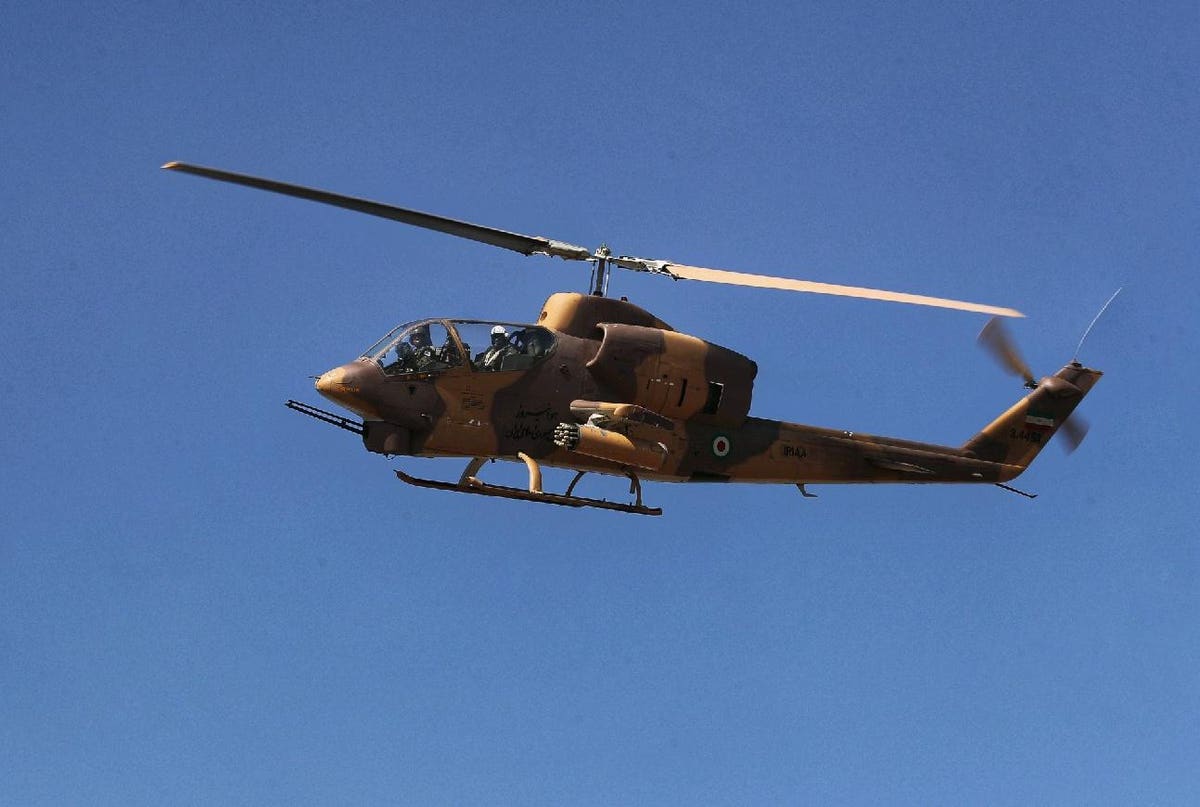Iran has boasted that it possesses the most powerful helicopter fleet in all of West Asia, thanks to its indigenous development of advanced weaponry and equipment. In reality, this fleet’s best days may already be in the rearview mirror.
“Today, the Iranian Army Aviation functions as the largest and strongest helicopter fleet in West Asia,” Brigadier General Yousef Ghorbani, commander of the Iranian Army Aviation, said on July 30.
Ghorbani also said Iran maintained self-sufficiency and developed advanced night vision equipment and precision-guided munitions despite United States sanctions against it.
The Iranian military does operate a large helicopter fleet, most of which it acquired before the 1979 revolution when Tehran was a close American ally.
In the mid to late 1970s, the American press speculated Iran might even have possessed the largest helicopter fleet outside the United States.
And it was easy to see why. During that period, Iran acquired 205 AH-1J International attack helicopters, the export variant of the iconic SuperCobra, almost 100 CH-47C Chinook utility helicopters, and over 300 Bell helicopters of various types, the most numerous being the Bell 214A. Over 1,000 American military contractors, many of them veterans from the recently concluded Vietnam War, ran a large helicopter school in Iran’s central Isfahan province to train Iranians to operate and fly their enormous new rotary-wing fleet.
Despite an American arms embargo on Iran following the revolution, these helicopters played critical roles in the ensuing eight-year Iran-Iraq War (1980-88). Iranian AH-1Js even shot down Iraq’s Soviet Mi-25 ‘Hind’ gunships in air-to-air engagements, the first and only of their kind in the history of modern warfare.
To this day, the bulk of Iran’s helicopter fleet consists of American helicopters from that period. Tehran has produced numerous local variants throughout the years. For instance, it built two versions of the AH-1J in the 2010s, known as the Toufan I and II.
Iranian efforts to pass off modified Bell helicopters as indigenous Iranian designs even invoked ridicule. For instance, Iran’s Shahed 285 light attack helicopter is a modified combat variant of the Bell 206. As one analyst quipped: “You can hang all the stuff you want off a Bell 206. It’s still a Bell 206.”
Iran’s biggest procurement of helicopters from abroad post-1979 came in the early 2000s when Tehran received an estimated 40 Mil Mi-8/17 utility helicopters from Russia. In 2016, Russia’s state-run press estimated there were 50 Russian-built helicopters registered in Iran, the most popular being the Mi-17.
Iran likely seeks additional Russian helicopters to upgrade and modernize its aging fleet. In January, Iranian military analyst Farzin Nadimi reasoned Tehran is most likely interested in acquiring Russia’s Mil Mi-38 medium transport helicopter and the K-32 variant of the Kamov Ka-27 military helicopter. He also anticipated Iran would seek the Mi-28M attack helicopter over the Ka-52, especially given the shortcomings the latter exhibited in the Ukraine war.
However, even these potential acquisitions are up in the air for a number of reasons. Despite forging an unprecedented military partnership with Russia, Tehran has not received any advanced military hardware from Moscow since the Ukraine war started.
Furthermore, Russia has shown difficulties in providing existing operators of Russian military hardware with spare parts and technical assistance. Iran’s neighbor Iraq ordered several modern Russian helicopters in the mid-2010s, including Mi-35 and Mi-28 attack helicopters, along with Mi-17s. Since the Ukraine war started, Iraq has had trouble obtaining spare parts from Russia. Consequently, Baghdad is turning to the United States for Bell helicopters as replacements.
In 2020, Brigadier General Ghorbani said Iran does not need to import parts for its helicopters and “can even help Islamic and friendly countries” improve and upgrade theirs, claiming Iraq “was very willing to buy our parts and install night-vision systems on helicopters.”
There is no indication, however, that Iran has helped Iraq service its Russian fleet, even though Russia’s Ulan-Ude Aviation Plant licensed Iran to repair and overhaul Mi-17s, the very type Iraq has heavily relied upon for supporting ground forces and conducting medevacs in operations against Islamic State militants.
Despite Ghorbani’s comments on these two occasions, the heyday of Iran’s helicopter fleet has passed and its future is very much in question.
Read the full article here





